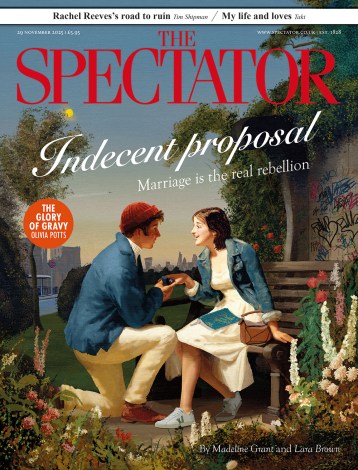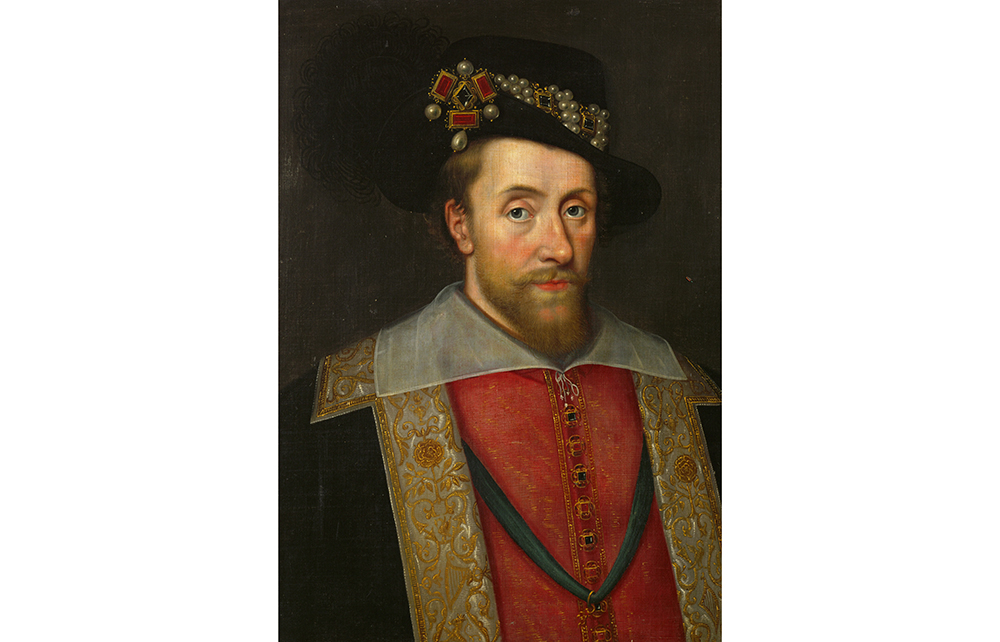Elizabeth I died at Richmond Palace on 24 March 1603 at the age of 69 after a reign of 45 years. Her health had been poor from the early 1590s onwards: arthritis, gastric disorders, chronic insomnia and migraines were just some of the ailments which plagued her. Yet, uniquely among English monarchs, she refused to make provision for the succession.
James I made great efforts to ensure that his escape from the Gunpowder Plot would not soon be forgotten
From Tudor to Stuart is Susan Doran’s enthralling account of the behind-the-scenes manoeuvres of those who had a viable claim to succeed the Virgin Queen. The group included the Habsburg Isabella Clara Eugenia (a descendant of John of Gaunt); Lady Arbella Stuart (a descendant of Henry VII); and Edward Seymour, Lord Beauchamp (another descendant of Henry VII). The book is also a history of the first decade or so on the English throne of the candidate who prevailed: James VI of Scotland.
James and his consort, Anna, the daughter of Frederick II of Denmark, have been overshadowed in the popular imagination for the better part of four centuries by those who came immediately before and after, both in Scotland and in England: Mary Queen of Scots (James’s mother); Elizabeth I (James’s cousin); and Charles I (James and Anna’s second son). Yet, as Doran rightly notes at the outset of this book, the early Jacobean period ‘is as important as it is exciting’. The union of the English and Scottish crowns; the Gunpowder Plot; the flowering of the court masque under Ben Jonson and Inigo Jones; Shakespeare’s production of what were arguably his best plays (Macbeth, King Lear, The Tempest); the successful establishment of the settlement at Jamestown, in Virginia – all this and more springs to life in these pages.
Now professor of Early Modern History at Oxford and a senior research fellow at Jesus College, Doran began her career as a history teacher at St Paul’s Girls’ School. She wears her learning lightly, writing in a lucid, conversational fashion with an eye for the memorable detail. We learn, for example, that the newly crowned James I – as part of a wider effort to consolidate his power base in England – sought to encourage intermarriage between the English and Scottish aristocracies. This strategy eventually paid dividends. But it got off to a bumpy start when, following the marriage in 1603 of Sir John Kennedy and Elizabeth Brydges, the daughter of the 3rd Baron Chandos of Sudeley, it emerged that Kennedy already had a wife in Scotland. His apparent motivation for entering into this second, bigamous marriage was the substantial dowry Lord Chandos had settled on his daughter. We learn, too, about James’s meticulous efforts to ensure that his and his family’s miraculous escape from the Gunpowder Plot would not soon be forgotten. Beginning in 1606, 5 November was ‘treated as a red-letter holiday throughout Britain and marked by a special morning service of thanksgiving with a set form of prayers’. Not until 1859 would the statute establishing this annual religious service be revoked.
The story Doran tells, however, is as much about Anna of Denmark as it is about James. Anna, as Doran reminds us, was England’s first queen consort since Katherine Parr, Henry VIII’s sixth wife, more than 50 years earlier – though the last to be crowned had been Anne Boleyn, Henry’s second wife, in 1533. In contrast to the childless Elizabeth, Anna was a mother of three when she arrived in London in 1603 – and, in her first few years as queen of England, bore two more children. (One died shortly after birth, the other died as a toddler.) The many poets who orbited Anna associated her with fruitfulness, likening her to Old Testament matriarchs such as Leah, Rachel and Ruth. At twelfth night 1605, the heavily pregnant queen played the role of Euphoris, a fertility nymph, in a Jonson-Jones masque, boldly wearing a gauzy costume that allowed the audience to see her arms and legs.
Doran’s narrative ends in 1612, the year in which James and Anna’s elder son Henry died, probably of typhoid fever, at the age of 18, temporarily raising the spectre of another succession crisis. Their younger son, Charles, was at the time a sickly ten-year old, while their 16-year-old daughter, Elizabeth, was betrothed to the Elector Palatine, and thus soon to leave England. (This meant that any children born to her might, in the event of Charles’s death and her own, be excluded from the throne as foreigners.)
That year was also the one in which Robert Cecil, 1st Earl of Salisbury – whose counsel both James and Anna had long relied on – died. From 1612 until his own death 13 years later, James, according to Doran, ‘was far less sure-footed’. But that, she notes tantalisingly, ‘is the subject of another book’ – an indication, it is to be hoped, that a follow-up volume is already in the works.







Comments